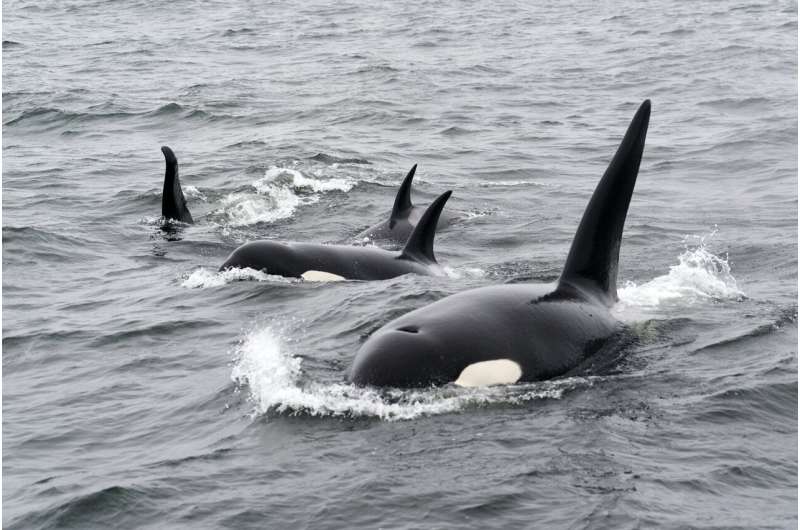This article has been reviewed according to Science X's editorial process and policies. Editors have highlighted the following attributes while ensuring the content's credibility:
fact-checked
peer-reviewed publication
proofread
New study reveals DNA analysis can help predict which animals face highest risk of extinction

A team of scientists led by San Diego Zoo Wildlife Alliance and University of California, Santa Cruz has discovered that animals' genomic information can help predict which mammal species are more likely to face extinction.
Species with smaller historical populations carry higher burdens of damaging mutations and have elevated extinction risk, they found, which suggests that long-term demographic statistics are relevant to today's conservation status and resiliency.
The findings, which could change how conservation actions and resources are strategically applied to help save endangered wildlife, are part of a series of papers from the Zoonomia Consortium that will be published this spring in a special issue of the journal Science.
The planet is experiencing a rapid biodiversity loss, with tens of thousands of species at risk of dying out, and identifying the ones in most urgent need is a long and costly process. But there's little information known about thousands of species, which makes it difficult to allocate limited conservation resources to target those closest to the brink.
To help circumvent these limitations, the scientists examined 240 mammal species, from tiny tree shrews to towering giraffes, killer whales and even humans. They found that the DNA encoded within a single genome—reflecting the species' history over millions of years—can provide a rapid, cost-effective conservation risk assessment, even when we know little about the animals' physiological, behavioral and life history characteristics, or even how many individuals remain.
"These results show that genetic information, even if only from a single individual for a given species, offers immediate, actionable guidance for scientists designing conservation strategies as well as those with boots in the field," said Aryn P. Wilder, Ph.D., a conservation scientist at San Diego Zoo Wildlife Alliance and one of the paper's two lead authors.
"The limited resources available for the conservation of wildlife species requires triage," said Megan Supple, a research scientist with the UCSC Paleogenomics Lab and co-lead of the project. "Our genomic assessment provides a relatively inexpensive method to rapidly identify species at risk of becoming endangered in the future, even when little else is known about that species. This genomic triage enables managers to target limited resources toward species most in need."
The genomic research was used to train models that quickly distinguish between threatened and non-threatened species, based on demography, diversity, and mutations that impact fitness. This will help assess extinction risk and identify which of the thousands of threatened species stand to benefit the most from conservation support, especially as the number of sequenced genomes grows and the models continue to improve.
Three species—the Upper Galilee Mountains blind mole rat, lesser chevrotain and orca—are highlighted as just three examples of the thousands of species lacking information on whether they're threatened. The scientists applied their models to these "data-deficient" species to demonstrate how a genomic risk assessment could work.
What makes the research groundbreaking is the overall number of species included in the study, which is the largest of its kind. By examining 240 species, scientists were able to estimate the genomic characteristics that best predict extinction risk and build genomic risk assessment models that can be used when other information is lacking.
That led the paper's authors to call for genomic information to be included in conservation status assessments of species, to bridge the gap between geneticists and conservation managers and provide a framework for deploying money and resources to species at highest risk.
"Many potentially endangered species are classified as 'data deficient,' meaning that we simply have too little information to determine whether immediate conservation action is required," said Beth Shapiro, Ph.D., Professor of Ecology and Evolutionary Biology at UC Santa Cruz and an HHMI Investigator. "Our results show that a genome from a single individual can be sufficient to identify the most threatened of these 'data deficient' species, enabling us to focus our limited resources where they can be most impactful."
"Our rapidly changing world threatens animal and plant species worldwide—but the use of genomics in conservation is a massive, underappreciated opportunity to protect them," said Oliver Ryder, Ph.D., the Kleberg Endowed Director of Conservation Genetics at San Diego Zoo Wildlife Alliance and co-senior author of the paper.
"We are in an unprecedented era of discovery—a whole new way of seeing the world. We've long thought this potential existed, but it's profound to see it crystallize into a catalyst that will help conservationists make crucial decisions that may save the world as we know it."
The genomics manuscript is part of the work of the Zoonomia Consortium, the largest comparative mammalian genomics resource in the world, involving more than 150 people worldwide. The Science series papers also demonstrate how comparative genomics can shed light on how certain species achieve extraordinary feats, and help scientists better understand the parts of our genome that are functional and how they might influence health and disease. They also identified part of the genetic basis for rare mammal traits, such as the ability to sniff faint scents from miles away.
The San Diego Zoo Wildlife Alliance's "Frozen Zoo" provided many of the genetic samples, including those of threatened and endangered species, for the DNA analyses performed at more than 50 institutions worldwide as part of the Zoonomia Consortium. The Frozen Zoo, or Wildlife Biodiversity Bank, is the largest repository of genetic material of its kind, containing viable cell cultures and reproductive material from approximately 10,000 animals representing over 1,100 species and subspecies.
More information: Aryn P. Wilder et al, The contribution of historical processes to contemporary extinction risk in placental mammals, Science (2023). DOI: 10.1126/science.abn5856. www.science.org/doi/10.1126/science.abn5856
Journal information: Science
Provided by San Diego Zoo Wildlife Alliance




















